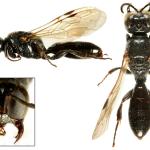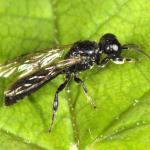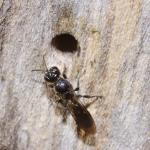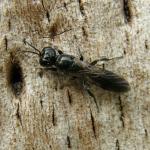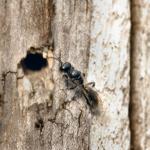Crabro vanderlindeni (DAHLBOM,1838); Crabro dilatatus (HERRICH-SCHÄFFER,1841); Crabro inornatus (MATSUMURA,1912); Crossocerus dentsukanus TSUNEKI,1976
Available data currently show this species to be quite widely recorded across England and Wales, just reaching southern Scotland and very rare in Ireland. This picture is perhaps rather more positive than Richards’ (1980) summary as “rare and local”.
Elsewhere, this species is widespread across northern and central Europe, including Scandinavia south to northern Spain and Italy, Greece and Turkey, and also eastwards to Korea, China and Japan (Dollfuss, 1991; Bitsch & Leclercq, 1993).
This species is not regarded as scarce or threatened.
Occurring in sunny spots where suitable nest sites are available, such as margins of woods, hedgerows, scrubby heaths, parks and gardens.
Mainly May to August and more sparingly into September.
Small Diptera are widely held to be the main, if not sole prey items, although Richards (1980) suggests the possible capture of aphids and white-fly (Hemiptera) in addition.
This small wasp nests mainly in dead wood but also in hollow plant stems. It appears to utilise a wide variety of trees and shrubs, including maple, birch, ash, rose, willows and elder.
No data available.
No data available.
2018


